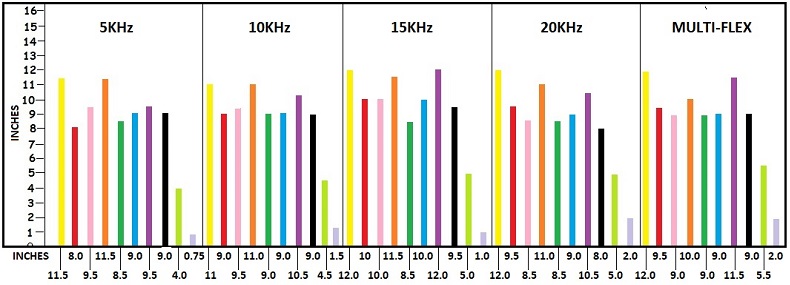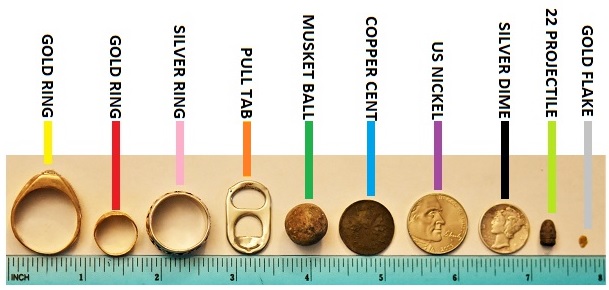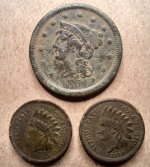John-Edmonton
Silver Member
- Mar 21, 2005
- 4,397
- 3,946
- Detector(s) used
- Garrett- Master Hunter CX,Infinium, 1350, 2500, ACE 150-water converted 250, GTA 500,1500 Scorpion, AT Pro


Monte, I am mostly using multi-frequency mode, as on average, it does extremely well. For high conductors such as silver and copper coins, lower frequency is usually better, and that is validated with the silver dime in the histogram up above. It air tested at a greatest distance with 5 kHz. That tiny gold flake faired the best with 20kHz, including multi - frequency.
Now, these are air tests, and can account for a certain margin of error, but they are based on the maximum potential with the detector. Even out in the field, one can't simply call a certain coin at a constant fixed value (depth) with a particular metal detector frequency. Mineralization, humidity in the soil, target orientation to the coil, oxidation formed on the coin and size of coin will all change the depth results.
As a general rule, a lower frequency on the APEX 5kHz, would give you a sensitivity and depth advantage with copper and silver coins. Lower conductors should fair better with a higher frequency. However, keep in mind, that most gold rings are not 100% gold. They are mixed with non-ferrous elements such as silver and copper. You will get your highest gold% in natural gold found in rivers, streams, and rock. So, gold rings should fair well in multi frequency. Our common aluminum pull tabs are most sensitive to higher frequencies, as they are often in the gold range.
So, if you can define what you are searching for.....ie gold rings, gold nuggets, silver, copper coins, you can get an advantage choosing a particular frequency on the Garrett Apex.
Stay Safe!






